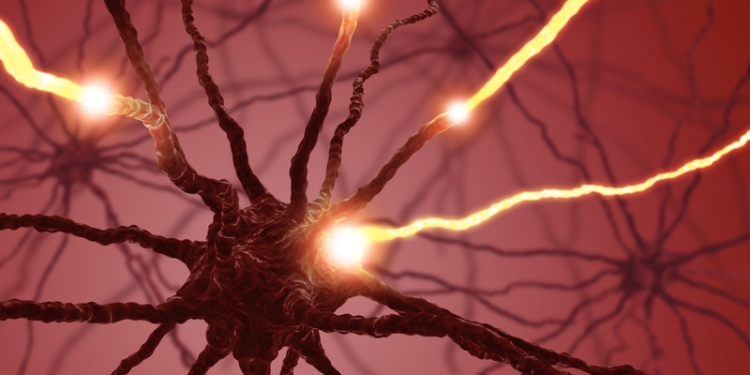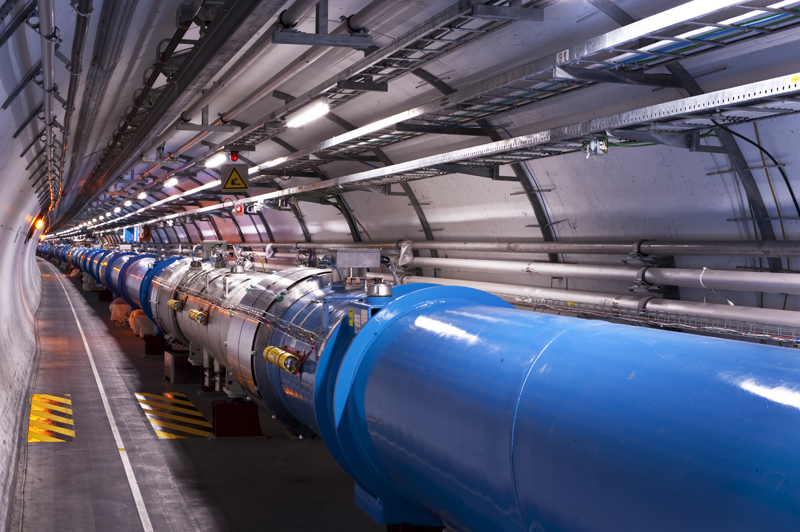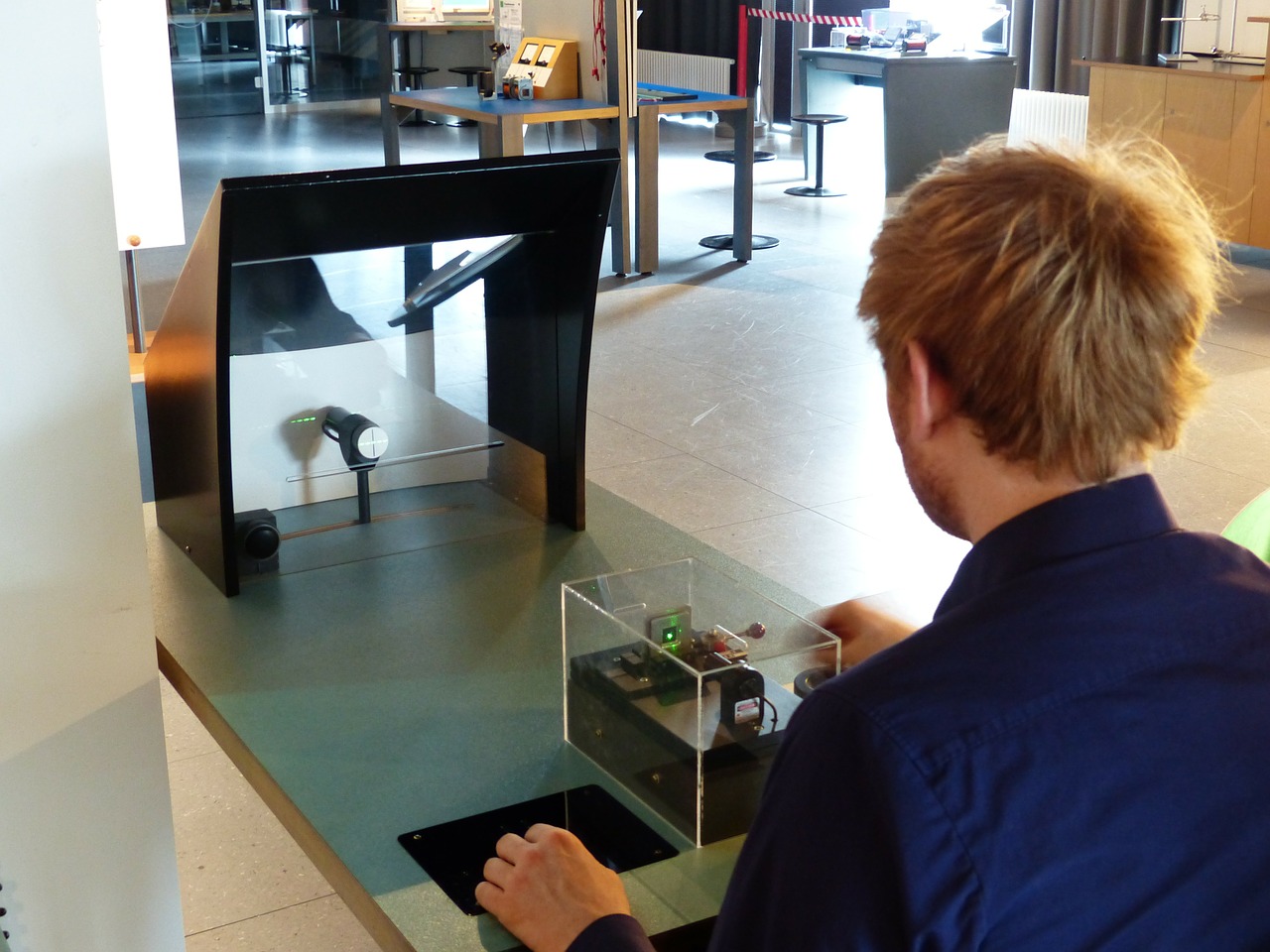Do We Have A Shared Consciousness & Could This "Quantum Mind" Explain Ghost Sightings?
This article is more than five years old and was last updated in February 2024.

Photo: canstockphoto.co.uk
We've ventured into space, charted the oceans, and discovered what's inside the atom, but despite this wealth of human knowledge and exploration, we're still not really sure what's going on inside our own heads. Recently scientists have been debating whether consciousness is a fundamental property of the universe and what that could mean for our current understanding on things like the afterlife and the paranormal.
We all know what consciousness is, we know when we're conscious, we hear our conscious thoughts and understand the difference between being asleep and awake. Consciousness is often defined as the ability to observe yourself.
Although consciousness is what makes us us, after all, "I think, therefore I am," some researchers now believe that consciousness could be a property of the universe that is much bigger than you and I.
The American medical doctor and scientist, Robert Lanza wrote in an article, "we are all the ephemeral forms of a consciousness greater than ourselves." He claims that the mind of every human is instantaneously connected to each other, "a part of every mind existing in space and time."
The principles of this belief are based on our current quantum mechanical view of reality, and for this reason has been called quantum consciousness or the quantum mind.
If the existence of a quantum consciousness can be proved, then it will answer some long-debated questions about the afterlife and even the existence of ghosts. If our souls can live on outside the body as some form of mental energy, then there's the potential for the living to pick up on the energy of the dead in the form of ghosts or spirits.
Quantum mind theory postulates that our consciousness, or even our soul, is an energy or force which is distinct from our bodies. It implies that our brains are some how able to tap into this shared consciousness, this would mean that when our brains die, our consciousness lives on as part of something much bigger.
Of course, this isn't the only theory about how consciousness works. The more generally accepted theory is that consciousness is a mechanistic byproduct of our incredible brains. Neuroscientist Giulio Tononi of the University of Wisconsin-Madison, has proposed the integrated information theory, which states that consciousness is the result of the vast amount of information that comes into our brain, our brain interweaves a sophisticated information web from sensory and cognitive inputs.
Another similar theory, known as the global workspace theory, proposed by neuroscientist Bernard Baars from the Neurosciences Institute in La Jolla, California, claims that consciousness could simply be the act of broadcasting information around the brain from a memory bank.
Cosmologist, Sean Carroll, is just one in a long line of scientists to make headlines by claiming outright that there is no such thing as an afterlife or ghosts. It's agreed upon that in order for there to be an afterlife, consciousness would need to be entirely separate from our physical body, the physicist from the California Institute of Technology argues that it is not.
He says, "claims that some form of consciousness persists after our bodies die and decay into their constituent atoms face one huge, insuperable obstacle: the laws of physics underlying everyday life are completely understood, and there's no way within those laws to allow for the information stored in our brains to persist after we die."
However, one British physicist is an advocate for the quantum consciousness theory. Sir Roger Penrose argues that consciousness like all forms of energy can't be destroyed, and therefore lives on outside of the body when someone dies. Penrose first proposed that a quantum consciousness might exist in his 1989 book 'The Emperor's New Mind'.
Sir Penrose thinks that when a person temporarily dies, their conscious energy is released into the universe, only to return to the body's cells if the person is revived and brought back to life. This, he says, explains how people have near-death experiences.
Researchers at the Institute for Physics in Munich also subscribe to Roger Penrose's theory and say that our awareness of a physical universe is just a perception. When we die, there is an infinite existence beyond the physical universe in the form of energy.
Dr. Hans-Peter Dürr, former head of the institute, said "what we consider the here and now, this world, it is actually just the material level that is comprehensible. The beyond is an infinite reality that is much bigger."
So, if scientists like Dürr and Penrose are correct, when the body dies the spiritual energy continues, Dr. Dürr adds, "in this way, I am immortal."
Whichever side of the argument you back, the evidence that supports it is rooted in quantum field theory and this is where the debate gets interesting. While one group of scientists argue that quantum field theory proves that there is a shared consciousness and life after death, the opposing group use the same branch of physics to prove their argument that consciousness cannot live on outside the body after death.
Advertisement ‐ Content Continues Below.
Here's The Science Bit...

In theoretical physics, quantum field theory is a framework which encompasses our understanding of subatomic particles and gives us a mathematical model that describes the types of fields that make up these subatomic, or quantum, particles. The scientists also look at the bigger field of quantum mechanics, which includes some very strange phenomena, such as quantum entanglement and superposition.
Quantum field theory states that there is one field for each type of particle. This means all of the photons, which make up light, in the universe are part of one field. All electrons make up another field, the same is true for gravitons and every other type of subatomic particle.
Sir Penrose believes that this theory, combined with the first law of thermodynamics which states that energy can neither be created nor destroyed, means that, like other quantum fields of energies, there is one uniform field of consciousness, which exists throughout the universe, which cannot be destroyed.
If you believe in a shared consciousness, this would mean that all consciousness that has ever and will ever exist is present in the universe right now. Sir Penrose says that he believes consciousness to be packets of information stored at a subatomic level. The scientist believes that this mental energy is stored in microtubules within the cells of our brains.
He believes that these protein strands reside inside the neurons in our brains and can store and process information and memory. Apparently, these microtubules are quantum devices where information comes together into an instantaneous calculation, called "quantum coherence."
Taking this a step further, Penrose says that the energy leaves the microtubules after a person dies. He said, "if the patient dies, it's possible that this quantum information can exist outside the body, perhaps indefinitely, as a soul". So, in order for our consciousness to survived after death, it would need to exist as a quantum field of its own.
In 2016, Sir Roger Penrose explain how he came to conceive of quantum structures in the brain and discusses his views on the relationship between consciousness and quantum mechanics. You can hear his thoughts in the video below.
Many other scientists have suggested that quantum effects are indeed involved in the process of consciousness, but even those who advocate this belief admit that the hypothesis remains unproven. Until they make a prediction that is tested by experiments, the hypotheses aren't based in empirical evidence. Some experts go as far as saying that the hypothesis is possibly unprovable.
Penrose's theory has been criticised by some who say the brain is too warm and wet to sustain a quantum processe. The effects would be destroyed due to a process called decoherence, which is expected to be extremely rapid in living cells. Physicist and cosmologist Max Tegmark calculated that the brain can't process information as fast as it would have to to make this theory possible.
Others who oppose the theory do so on the basis that if "spirit particles" or mental energy exist, then we should be able to detect it, and we haven't. Adrian Kent of the University of Cambridge estimates that there is just a 3% likelihood that we will be able to experimentally detect a link between consciousness and quantum theory in the next 50 years.
Professor Brian Cox recently stated that if some kind of spiritual energy existed the experiments at CERN (the European Center for Nuclear Research) should have detected it using the Large Hadron Collider (LHC), the world's biggest and most complex science experiment, a particle accelerator 17 miles in circumference built underground on the border of France and Switzerland.
Professor Cox said, "if we want some sort of pattern that carries information about our living cells to persist then we must specify precisely what medium carries that pattern and how it interacts with the matter particles out of which our bodies are made."
Talking about this proposed conscious energy, Brian said, "it must interact with the particles out of which our bodies are made. And seeing as we've made high precision measurements of the ways that particles interact, then my assertion is there can be no such thing as an energy source that's driving our bodies."
If Dr. Carroll and Professor Cox are right, then all this means that there is no "life force" within us with its own distinct energy that can leave the body to live on as a ghost or spirit after the body has died.
You may be thinking, perhaps these "spirit particles" simply can't be detected. Well, that's possible but if they can't be detected then this raises questions about how these particles interact with other particles so as to exert their influence on the human brain in order to give rise to consciousness.
From a paranormal standpoint, if ghosts are a manifestation of this spirit energy but this energy cannot be detected, then a ghost wouldn't be able to interact with its surroundings. Not only does this mean poltergeist activity wouldn't be possible, but it would mean that ghosts wouldn't reflect light and would therefore not be visible to the naked eye. They would also be unable to manipulate the air in order to produce the sound waves required for speech.
But many, including Roger Penrose, believe that we're not able to detect this energy due to the weird properties of quantum mechanics. There's one odd principle in quantum mechanics known as the observer effect, which nobody really understands. As nobody understands the nature of consciousness either, many think the two could be linked.
The Observer Effect

Photo: pixabay.com
One of the strangest phenomena in quantum physics is the observer effect, which can be demonstrated using the called the double-slit experiment, the outcome of which is often described as mysterious, a term not often used in the scientific world.
The reason for this label is because the outcome of the experiment changes depending on whether or not we observe or measure the results.
The experiment involves shining a beam of light at a panel with two parallel slits in it. Some of this light passes through the slits forming two paths, the emerging from the slits acts like waves, they interfere with one another. The interference can be seen when the light hits a second panel as a series of alternating brighter and darker spots. The pattern appears brighter where the waves converge and reinforce each other.
This experiment shows us that photons, which are particles of light, can behave like waves as well as particles. The same test can be carried out on quantum particles, like electrons, and can be used to prove that these tiny subatomic particles also behave like waves and particles at the same time. It's called wave-particle duality.
Where this starts getting weird, is when you fire a single electron towards the slits. Although there is only one particle at a time, overtime the same interference pattern builds up on the panel. This implies that the particle passes simultaneously through both slits and interferes with itself. This phenomena of being in two places at once is known as a superposition state.
When scientists put a detector behind the slits to try to establish which slit the electron had passed through, they encountered something very odd. Observing the experiment in this way seemed to force the particle to pass through one specific slit, not both. However, when this happens the interference vanishes.
So, just by observing the electron's path in a way that doesn't disturb the particle's motion, we change the outcome. Physicist Pascual Jordan said in the 1920s, "observations not only disturb what has to be measured, they produce it. The electron is forced to a decision. We compel it to assume a definite position."
If the way the world behaves at this fundamental quantum level can change depending on whether we observe it or not, then what does this mean for reality as a whole?
Sir Roger Penrose thinks that the microtubules in our brain are capable of changing their state in response to these peculiar quantum events. He proposes that they could even enter into a superposition state themselves, like the particles in the double-slit experiment. Could this be how our brains hold two mutually-exclusive ideas at the same time?
Phosphorus atoms are common in living cells in the form of phosphate ions, which means they've bonded with a oxygen atom. These cells are able to place the ions into groups. Matthew Fisher from the University of California thinks that pairs of these phosphate ions might enter an entangled state, this is another weird phenomena associated with quantum mechanics.
The nucleus of phosphorus atoms has a property called spin, when in an entangled state, the spin of each atom cannot be described independently of the state of the other, even when the particles are separated by a large distance. This of course backs the theory of quantum consciousness and massively increases the processing power of the brain.
Penrose think that our ability to perceive the world around us and process as much information as we do instantaneously far exceeds the capabilities of any computer currently in existence, but an emerging technology known as quantum computers are predicted to one day be capable of accomplishing much more than regular binary computers. Perhaps these type of computers could match our own cognitive ability and may even form their own consciousness.
Sir Penrose speculates that even if you connected every computer in the world, it's unlikely that it would create a consciousness, but he thinks a quantum computer probably could become conscious.
There is currently no evidence to support Penrose's theory that our consciousness depends upon superpositioned particles within our neurons, but oddly the use of lithium-based drugs to treat bipolar disorder could be a clue that there is some truth in the theory.
Although lithium is widely used to treat these sort of mental disorders, no one is really sure how they work, but a scientific paper noted that lithium had different effects on the behaviour of rats, depending on what variant, or isotope, of lithium was being used. The differences were noted even though different isotopes behave almost identically in a biochemical system.
If lithium worked like a conventional drug, the isotopes should all have had the same effect. However, atoms of different isotopes can have different spins and Matthew Fisher thinks that this quantum property might affect the way lithium drugs work.
Although Fisher isn't a supporter of quantum consciousness, the fact that the differing quantum properties of a drug can affect the brain in different ways, leans towards the belief that our brains work on a quantum level.
All this brings us back to our mythical spirit particles, which we now know must exist as a unified field like other types of particles. If this fundamental field of unified mental energy exists and can interact with our brain chemistry, but can't be measured because of the superpositioning and the observer effect, then this could explain why we can't detect, photograph or otherwise measure ghosts or paranormal activity.
On the other hand, the fact that we can't detect, photograph or otherwise measure the paranormal could just be more proof that these supernatural phenomenon don't exist outside of the realms of human imagination... but that's a whole different discussion.
Related Content
Daily Horoscopes
You May Also Like
























